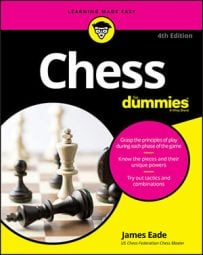Akiba Rubinstein (1882–1961), a grandmaster from Poland, is generally considered to have been the finest rook and pawn expert of his time. His handling of these positions has instructed entire generations who followed him, and this legacy now belongs to chess heritage.
Of course, few people can play like Rubinstein. One of his contemporaries, Dr. Siegbert Tarrasch, summed up my feeling about rook and pawn endings when he said, "All rook and pawn endings are drawn." That claim isn't true, of course, but it sure feels like it sometimes. My advice: Checkmate your opponent before you reach one of these endings!
Rooks are aggressive pieces and become despondent if relegated to passive defense. Keep this characteristic in mind, especially if you're defending an inferior position. Following are several guidelines for rook endings:
- Activate your rook. Sometimes you can even give up a pawn to turn a passive rook into an aggressive one. The sacrifice may well be worth it.
- Put your rooks behind passed pawns. You can best position your rook behind a passed pawn, whether it's yours or your opponent's, because the rook's mobility increases any time the pawn advances. The next best rook position is to the side of passed pawns, and the least desirable position is in front of passed pawns.
- Advance connected passed pawns against rooks. Connected passed pawns are most effective against rooks because it's difficult for the rook to stop them both. So, advance these pawns together.
- Put your king on the queening square. If you're defending your king with one rook against a rook and a pawn, occupy the queening square with your king, if possible. This strategy makes it harder for the pawn to promote.
- Harass your opponent's king with your rook. If defending, you may want to harass the enemy king with repeated checks by your rook. Harass from a safe distance, however, keeping your rook as far away from the enemy king as possible to avoid losing it.
- Look out for the draw. When both sides have pawns all on one side of the board, rook endings are often drawn.

